| New York
Architecture Images- Recent John Jay College of Criminal Justice Expansion |
|
| Please note- I do not own the copyright for the images on this page. | |
|
architect |
Skidmore, Owings & Merrill LLP |
|
location |
occupy almost an entire city block – from 58th to 59th Streets and from 10th to 11th Avenues |
|
date |
Completion Year: 2011 |
|
style |
Neomodern architecture |
|
type |
Education |
|
construction |
Site Area: 100,000 ft2 Project Area: 625,000 ft2 Building Height: 240 ft Number of Stories: 14 The building houses 56 classrooms, labs, and social spaces in a 14-story tower and a four-story podium topped with a garden. |
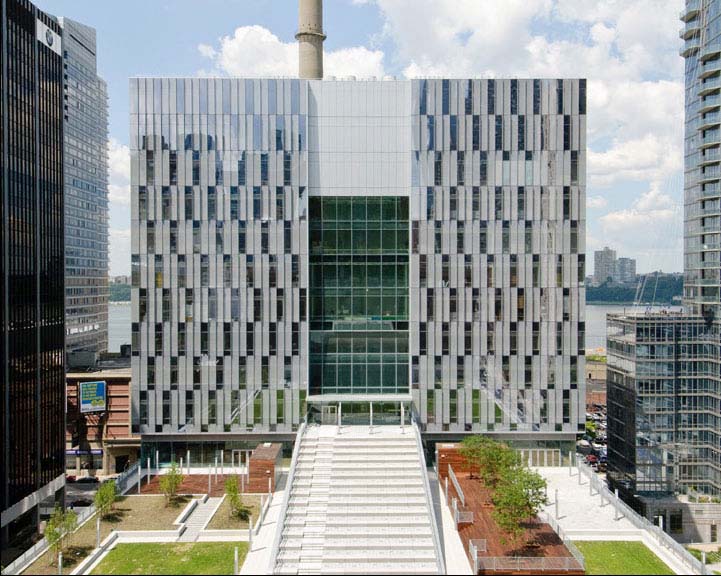 |
|
 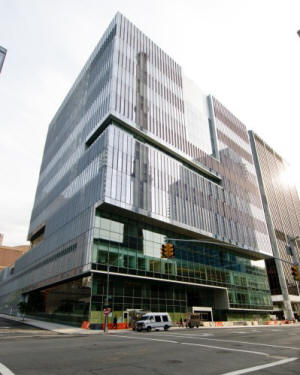 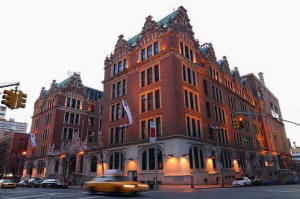 |
|
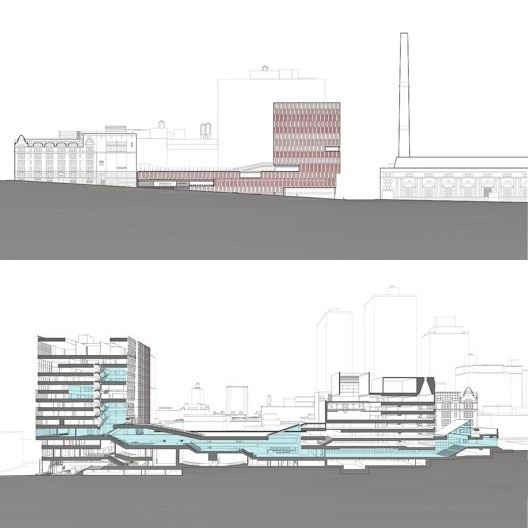 |
|
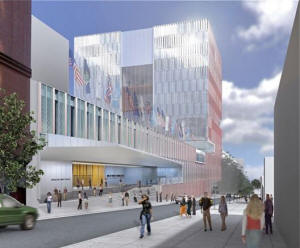 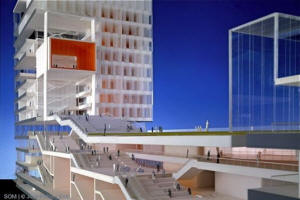  |
|
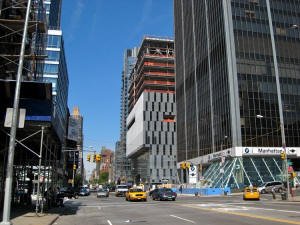   |
|
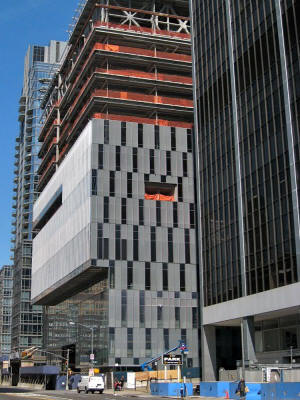  |
|
|
notes |
Increased enrollment and demand for criminal justice
education have resulted in an expansion plan at CUNY's John Jay College of
Criminal Justice. The new addition will for the first time create a cohesive
instructional environment and integrate all college functions into a unified
urban campus, creating an academic city within a city. Project Awards 2005 • AIA - New York City Chapter • Design Award: Project 17 Aug 2009 THREE NEW YORK CITY SOM HEALTH + SCIENCE PROJECTS REACH MAJOR CONSTRUCTION MILESTONES A confluence of events for this strong and growing practice at Mount Sinai, John Jay College and North Shore-Long Island Jewish Medical Center New York – Three major projects by Skidmore, Owings & Merrill’s Health + Science practice are celebrating important milestones this summer. On August 27th, John Jay College of Criminal Justice will celebrate the topping out of its new 620,000-square-foot expansion. Just last month, the new 290,000-square-foot Women’s Hospital at North Shore-Long Island Jewish Medical Center also topped out. And, earlier this summer, excavation began at the site of the Mount Sinai Center for Science and Medicine. These three projects, which account for an aggregated total of more than 1.5 million square feet of construction, are all in New York City – on the West Side of Manhattan, in New Hyde Park, and on Manhattan’s Upper East Side respectively – and represent the three-pronged focus of SOM’s Health + Science practice – education, research, and patient care. For more than half a century, SOM has brought its unique ability to create buildings that both create a distinct design identity while promoting the clients’ institutional mission to bear on projects for health and science. In New York alone, the practice has completed projects for Memorial Sloan Kettering, St. Luke’s Roosevelt Hospital, The Hospital for Special Surgery, and Kings County Hospital Center. Today is no different. Mustafa K. Abadan, the design partner in charge of SOM’s Health + Science practice, says, “Each of these three projects is exceptional and extraordinary in its own way; what they all have in common is a highly demanding program and a mission that is worthy of great design. We are answering both calls and trying to raise the bar on these building types.” John Jay College of Criminal Justice The new John Jay College of Criminal Justice is intended to occupy almost an entire city block – from 58th to 59th Streets and from 10th to 11th Avenues – with an integrated, vertical campus that creates a strong urban form, providing the internationally recognized college a strong identity within the city. The design responds to the institution’s four main goals: provide the space necessary to accommodate increased enrollment; create a significant campus commons; provide traditional campus attributes for liberal arts and graduate students; and create an academic city within the city. Located on a dense, urban site, the 620,000 square foot expansion addresses the shortage of instructional space caused by increased enrollment, while integrating the currently disparate functions into a unified urban campus with a new front door and a new public face. JJCCJ is not only an academic institution promoting an integrated liberal arts and professional education; it is also a major training facility for local, state, federal, and law enforcement personnel. The college has seen a huge increase in enrollment since September 11, 2001, with many more people interested in topics such as forensic and fire science for high-rise buildings. The new facility balances faculty and student needs, incorporating student services, lounges, assembly spaces, classrooms, departmental offices, research labs, and teaching labs. The design culminates in a campus commons that will occupy the roof between the existing and the new structures. Programmatic functions are organized into three clear architectural components: a vertical urban campus, a public circulation spine, and academic quads. Source- http://www.som.com/content.cfm/john_jay_college_of_criminal_justice http://www.jjay.cuny.edu/expansionproject/ About The John Jay College of Criminal Justice is a senior college of the City University of New York in Midtown Manhattan, New York City and is the only liberal arts college with a criminal justice focus in the United States. It has about 14,000 FTE (full-time equivalent) students, including traditional, pre-career undergraduate students and those pursuing master’s degrees in several disciplines. John Jay College of Criminal Justice was founded in 1964 and was originally called the College of Police Science (COPS). Classes were held at the Police Academy on East 20th Street. Eventually, the school was expanded to incorporate many liberal arts disciplines and was renamed John Jay College of Criminal Justice. It moved to its current location in the former Charles B. J. Snyder-designed De Witt Clinton High School in 1988. After Clinton moved to the Bronx the building became Haaren High School. The building is now Haaren Hall on the campus. It offers criminal justice education and research. It is a training facility for local, state, and federal law enforcement personnel.[citation needed] The college has invited speakers such as Janet Reno and Supreme Court Justice Ruth Bader Ginsburg. John Jay is one of only a handful of public colleges with two Pulitzer Prize winners (Mike Wallace and John Matteson) on its faculty. The school's namesake, John Jay, was the first chief justice of the United States Supreme Court and one of the founding fathers of the United States. Jay was a native of New York City, and a New York State governor. The school has a Forensic Science program, one of the few schools in the nation which offers the undergraduate degree. The College is unique from other Criminal Justice programs across the country as a result of its locale. Besides local law enforcement agencies, the New York City area contains a number of federal law enforcement agencies. The geographical location and specialization has afforded the University a pool of experienced instructors from which to hire. The faculty are often former high level law enforcement officers who have years of experience in the field. |
|
|
|
|
|
|
|
|
|